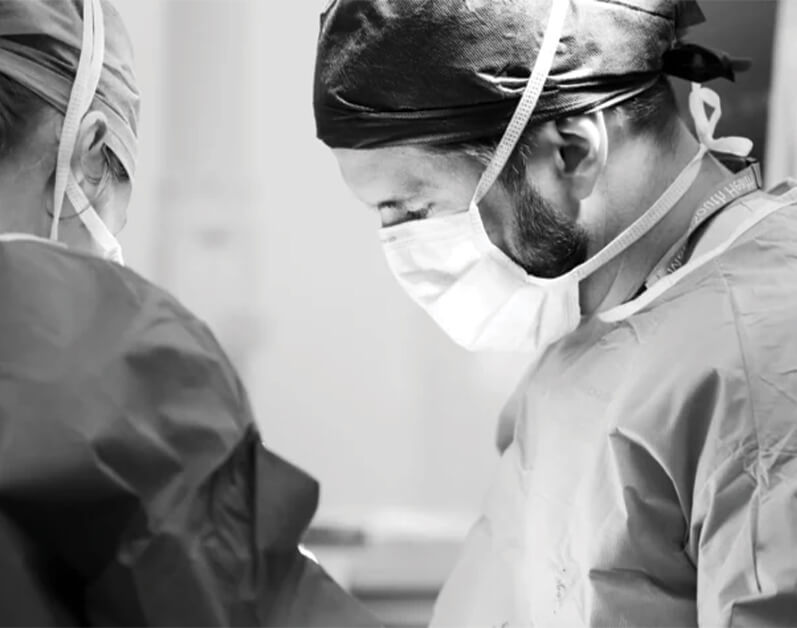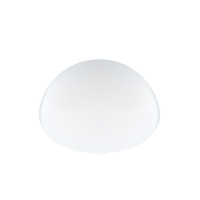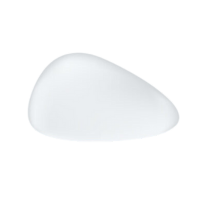FOUR LOCATIONS ONE EXPERIENCED TEAM

Breast implants come in two main shapes: round and teardrop (anatomical). Your choice affects your final look and should be based on your anatomy and goals.
Round Implants:
Add volume throughout the breast, including the upper area. Ideal if you want more pronounced cleavage, upper fullness, and lift. Their symmetrical design means rotation isn't visually problematic.

Teardrop Implants:
Follow natural breast contours with more volume at the bottom. Create a more natural-looking slope and are particularly suitable for patients with minimal tissue, mild sagging, or specific shape concerns like tuberous breasts.
Both shapes offer various profiles and projections to customise your results.

Implant profile determines how far your implants project from your chest wall relative to their base width. Options range from moderate plus to high and ultra-high profiles.
Two implants with identical volume (measured in cc) but different base widths will create different projections—narrower implants project further forward than wider ones of the same volume.
Lower-profile implants typically create a more natural appearance. During your consultation, we'll discuss your desired look and take precise chest measurements to determine the ideal width and height for your implants.
Breast implants come with either smooth or textured outer shells, each offering different benefits.
Smooth Implants:
Feature a glossy, slick surface allowing natural movement within the breast capsule. They move freely with your breast tissue for a dynamic feel.
Textured Implants:
Have a rough, irregular surface that adheres to surrounding tissue, helping maintain position over time. They're less likely to shift or rotate compared to smooth implants.
Your choice depends on your anatomy, lifestyle, and desired outcome.
When selecting implant size, we consider your measurements, desired appearance, and lifestyle. Our clinic offers a wide range of sizes from 125cc to 1060cc.
Remember that the same implant size produces different results on different bodies. Your unique natural breast tissue and soft tissue characteristics significantly influence the final outcome. Breast augmentation works with your existing features to complement your natural proportions.
During your consultation, we'll evaluate your measurements, frame, current cup size, and aesthetic goals before suggesting suitable implant sizes. While we provide expert guidance, the final size decision remains yours.
Your lifestyle is also important—if you're active in sports or high-impact activities, we'll recommend sizes that accommodate your physical routine and minimise potential impact on your body.
Two primary materials are used in breast implants, each offering distinct characteristics:
Saline Implants:
Filled with sterile saltwater solution after placement in the breast pocket. If rupture occurs, the saline is safely absorbed by your body, and the breast visibly deflates—making detection straightforward. These implants typically require smaller incisions as they're inserted empty and filled during surgery.
Silicone Implants:
Contain cohesive silicone gel that closely resembles the feel of natural breast tissue. If rupture occurs, the gel usually remains within the implant shell or breast pocket, making detection more difficult—sometimes requiring an MRI for confirmation. Silicone implants generally provide a more natural look and feel compared to saline alternatives.
Your choice between these options will depend on your aesthetic goals, body type, and personal preferences. During your consultation, we'll thoroughly discuss the advantages and considerations of each type to help you make an informed decision.
Breast augmentation requires an incision to insert the implant. Three common approaches include:
Inframammary Fold:
The most frequently used technique, involving a small incision (approximately five centimetres) placed in the natural crease beneath your breast. This approach provides excellent access for precise implant positioning while resulting in a well-concealed scar that typically heals favourably. The location in the natural fold helps keep scarring discreet.
Periareolar:
This technique places the incision along the lower half of the areola, just within the pigmented skin border. The transition between areolar and breast skin helps camouflage the resulting scar.
Transaxillary:
With this approach, the incision is hidden within a natural skin fold in the armpit. This technique leaves no scarring on the breast itself.
Each incision type offers different advantages regarding scar visibility, surgical access, and potential impact on future breastfeeding. During your consultation, we'll discuss which approach best suits your anatomy and goals.
The position of your breast implants relative to your chest muscles significantly impacts your results. Three main placement options include:
Subglandular:
Implants are positioned beneath your breast tissue but above your chest muscles. This approach often results in shorter recovery time and less post-operative discomfort. It may provide more pronounced upper pole fullness and is particularly suitable for those with adequate natural breast tissue for coverage.
Partial Submuscular (Dual Plane):
Implants are placed partially beneath the pectoral muscle at the top while the lower portion sits directly under breast tissue. This hybrid technique combines the natural upper slope of submuscular placement with the fuller projection of subglandular placement, creating a balanced result that works well for many body types.
Submuscular:
Implants are positioned completely beneath the chest muscles. This placement typically provides more natural-looking results with smoother transitions at the upper pole, reduces the risk of visible rippling, and may interfere less with mammography. Recovery may involve more initial discomfort as the muscle adjusts to the implant.
Your ideal placement depends on your body type, existing breast tissue, lifestyle, and aesthetic goals.
The internal bra refers to various surgical techniques that provide additional structural support for breast implants or tissue during breast procedures. This approach creates a supportive framework that helps maintain implant position and breast shape over time.
When implemented, an internal bra strengthens the lower breast area and reinforces the inframammary fold (the natural crease beneath your breast). This supportive foundation helps prevent complications like "bottoming out," where implants descend too low on the chest.
The barbed suture technique is one effective method used to create this internal support system. This approach uses specialised sutures with tiny barbs that grip surrounding tissue, providing stronger, more distributed support than traditional smooth sutures. The technique helps secure implant position while allowing for natural movement and feel.
By incorporating an internal bra during your breast augmentation, we can help ensure more predictable, longer-lasting results with improved implant stability and breast shape maintenance.

For those women seeking a more subtle boost in their breast size, an alternative option to consider is "autologous breast augmentation." This approach harnesses your body's own fat cells to elevate your breast tissue. By utilising liposuction to extract fat from different areas of your body, we can create the desired enhancement. This procedure is also commonly referred to as "fat transfer breast augmentation."
In the past, implants may be replacing after 10 years. We are now we are seeing greater longevity in implants over time.
The ideal preparation is to stay fit and healthy by maintaining a good diet, with good sleep, minimising alcohol intake and not smoking.
We believe in finding the best treatment option to match a patient’s requirements and their financial circumstances. Please make an appointment to discuss costs in detail.
There are many low-cost options both in Australia and overseas and great care should be taken when dealing with a surgeon who is not an ASPS / AHPRA / FRACS recognised Plastic Surgeon. Unfortunately, many patients confuse plastic surgeons with cosmetic surgeons (as recently mentioned in the ABC Four Corners report) and the training varies significantly.
Always ask your surgeon about their experience. We recommend that you ensure your plastic surgeon has undertaken over 12 years of post-medical specialist training. It’s also recommended to always seek second opinions if you have concerns. Ultimately you should feel comfortable with the surgeon you are seeing.